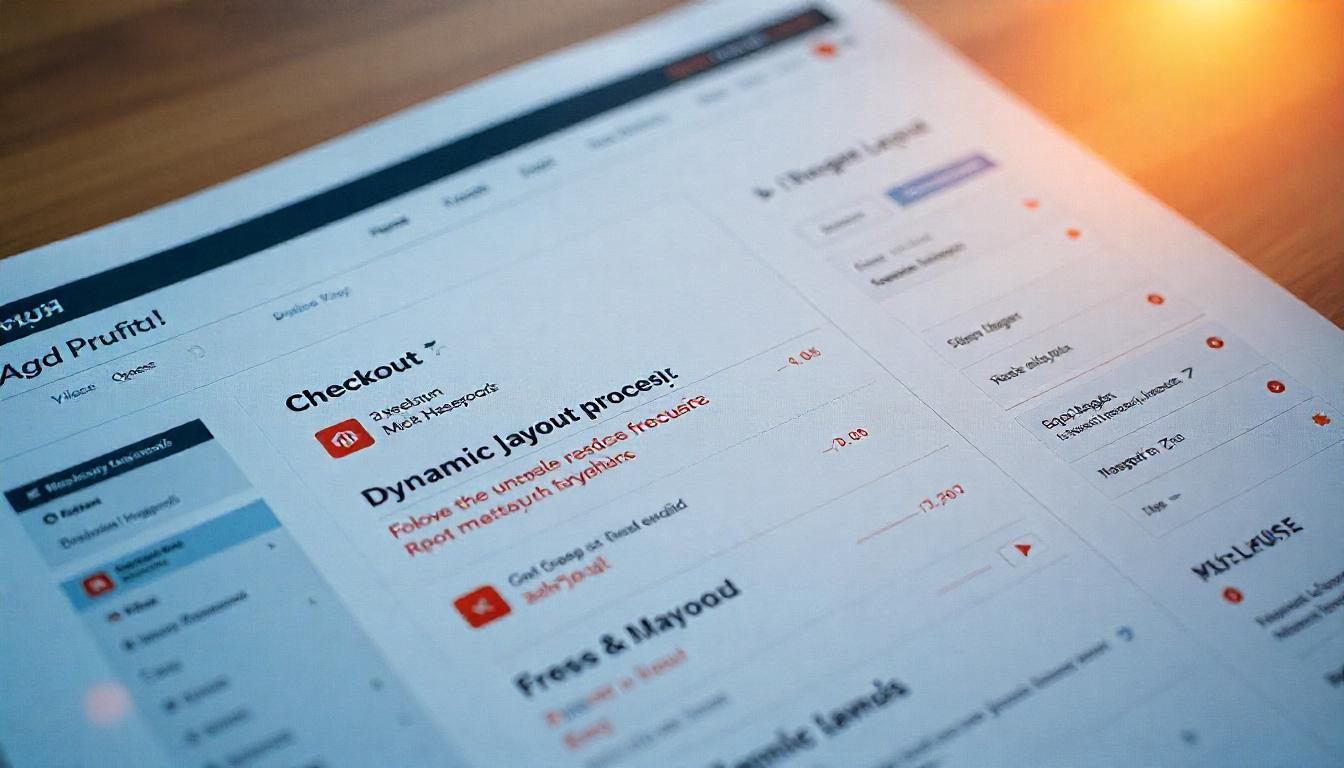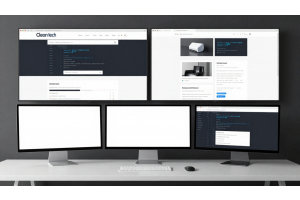How to Create a Custom Layout Processor for Magento Checkout

How to Create a Custom Layout Processor for Magento Checkout
Learn how to create a custom layout processor in Magento 2 to modify the checkout jsLayout dynamically. This guide walks you through implementing a LayoutProcessorInterface class, registering it with di.xml, and customizing fields like billing address or payment methods. Ideal for developers who want greater control over the Magento checkout experience without cluttering their codebase with XML overrides.
Table Of Content
How to Create a Custom Layout Processor for Magento Checkout
A layout processor is a PHP class that implements the \Magento\Checkout\Block\Checkout\LayoutProcessorInterface. Its primary function is to modify the jsLayout array before it's rendered on the checkout page. This method offers a more flexible and maintainable way to adjust the checkout layout compared to using XML overrides.
Why Use a Custom Layout Processor?
While XML layout files are useful for static configurations, they fall short when dealing with dynamic elements like payment methods or custom fields. A custom layout processor enables you to:
- Modify dynamic fields based on conditions.
- Reorder form fields without redundant XML code.
- Add or remove components programmatically.
- Maintain cleaner code by reducing XML complexity.
Implementing a Custom Layout Processor
1. Define the Processor Class
Create a PHP class that implements the LayoutProcessorInterface. For instance, to update the sort order of address fields:
<?php
namespace Vendor\Module\Block\Checkout\LayoutProcessor;
use Magento\Checkout\Block\Checkout\LayoutProcessorInterface;
class UpdateAddressSortOrder implements LayoutProcessorInterface
{
public function process(array $jsLayout): array
{
// Modify the jsLayout array as needed
$jsLayout['components']['checkout']['children']['steps']['children']['billing-step']
['children']['payment']['children']['payments-list']['children']['form-fields']
['children']['city']['sortOrder'] = 72;
// Return the modified jsLayout
return $jsLayout;
}
}
2. Register the Processor
In your module's di.xml, register the processor:
<!-- How to Set Up a Magento 2 Development Environment with docker-magento -->
<type name="Magento\Checkout\Block\Onepage">
<arguments>
<argument name="layoutProcessors" xsi:type="array">
<item name="update_address_sort_order" xsi:type="object">Vendor\Module\Block\Checkout\LayoutProcessor\UpdateAddressSortOrder</item>
</argument>
</arguments>
</type>
3. Enable Your Module
Ensure your module is enabled and up-to-date:
php bin/magento setup:upgrade
php bin/magento setup:di:compile
php bin/magento cache:flush
Example: Removing a Checkout Component
To remove a component from the checkout layout, such as the newsletter subscription, your processor might look like this:
<?php
namespace Vendor\Module\Block\Checkout\LayoutProcessor;
use Magento\Checkout\Block\Checkout\LayoutProcessorInterface;
class RemoveNewsletterComponent implements LayoutProcessorInterface
{
public function process(array $jsLayout): array
{
unset(
$jsLayout['components']['checkout']['children']['steps']['children']['billing-step']
['children']['newsletter']
);
return $jsLayout;
}
}
Best Practices
- Avoid overriding core processors. Instead, extend or replace them to maintain compatibility with future Magento updates.
- Use isset() checks before accessing array keys to prevent errors.
- Test changes in a staging environment before deploying to production.
- Document your processors to ensure maintainability.
Conclusion
Implementing a custom layout processor in Magento's checkout provides a robust and maintainable way to customize the checkout experience. By directly manipulating the jsLayout array, you gain precise control over the checkout components, leading to a more tailored and efficient user experience.
Tip
To enhance your eCommerce store’s performance with Magento, focus on optimizing site speed by utilizing Emmo themes and extensions. These tools are designed for efficiency, ensuring your website loads quickly and provides a smooth user experience. Start leveraging Emmo's powerful solutions today to boost customer satisfaction and drive sales!
FAQs
What is a layout processor in Magento 2?
A layout processor is a PHP class that implements the LayoutProcessorInterface. It is used to modify the jsLayout array before the checkout page is rendered, allowing dynamic control over checkout UI elements.
Why should I use a custom layout processor instead of XML overrides?
XML overrides are great for static changes, but custom layout processors provide more flexibility. They allow you to add, remove, or modify dynamic elements like custom fields or payment method components directly in PHP.
How do I create a custom layout processor in Magento 2?
You need to create a PHP class that implements LayoutProcessorInterface. Inside the process() method, you can modify the jsLayout array to customize the checkout layout.
How do I register a custom layout processor in Magento?
Register the layout processor in your module’s di.xml file by adding it to the layoutProcessors array under Magento\Checkout\Block\Onepage.
Can I reorder form fields using a layout processor?
Yes, you can easily reorder checkout form fields by modifying the sortOrder values of elements in the jsLayout array within your custom layout processor.
Is it possible to remove components using a layout processor?
Yes, components can be removed from the checkout layout by unsetting them from the jsLayout array in the process() method of your layout processor class.
How do I update my Magento instance after adding a layout processor?
After adding your layout processor, run php bin/magento setup:upgrade, php bin/magento setup:di:compile, and php bin/magento cache:flush to apply the changes.
What precautions should I take when modifying jsLayout?
Always use isset() checks when modifying deeply nested arrays to avoid runtime errors, and test all changes in a staging environment before pushing to production.
Can layout processors conflict with each other?
Yes, multiple layout processors modifying the same part of the jsLayout can cause conflicts. It's best to modularize and order them carefully in di.xml.
Where can I learn more about layout processors in Magento 2?
You can learn more from the official Magento documentation and community tutorials. A helpful video guide is available on YouTube titled “How to Implement Checkout Custom Layout Processor in Magento 2.”









